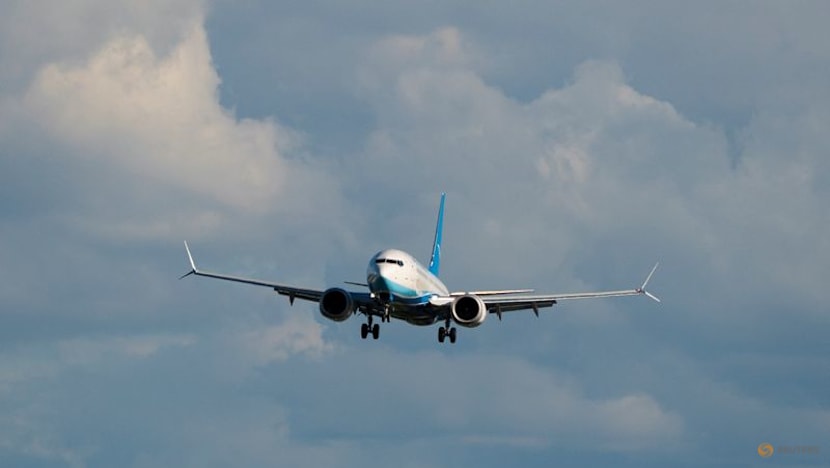Chinese airlines push back against Trump plan to bar Russia overflights on US routes

A Boeing 737 MAX 8, the second jet intended for use by a Chinese airline to be returned to its manufacturer, flies mid-air before landing at Boeing Field, as trade tensions escalate over US tariffs with China, in Seattle, Washington, US on Apr 22, 2025. (File photo: Reuters/David Ryder)
WASHINGTON: Major Chinese airlines have urged the Trump administration to scrap a proposal that would ban them from flying over Russia on routes to and from the United States, warning on Tuesday (Oct 14) that it would increase flight times, airfares and travel disruption.
The US Transportation Department (USDOT) last week proposed the restriction, arguing that Chinese carriers gain an unfair advantage over US airlines, which are barred from Russian airspace under sanctions imposed after Moscow’s 2022 invasion of Ukraine.
In filings to USDOT, six Chinese airlines, including China Eastern, Air China and China Southern, said the plan would severely disrupt operations.
LONGER FLIGHTS, HIGHER COSTS
China Eastern said the ban could add two to three hours to key routes, increase the risk of missed connections and sharply raise fuel costs.
Air China and China Southern said the proposal would affect “a substantial number” of passengers in both countries, with China Southern estimating around 2,800 travelers would need rebooking during the November–December peak season.
Russia has barred US and several Western airlines from using its airspace in retaliation for Washington’s earlier flight ban on Russian carriers. Chinese airlines, which were exempt, have benefited from shorter, cheaper transpolar routes that US competitors cannot access.
A Chinese foreign ministry spokesperson said on Friday that the proposed US restrictions were “not conducive to person-to-person exchanges.”
US CARRIERS SEEK FAIR COMPETITION
Airlines for America, representing major US carriers such as American, Delta and United, backed the USDOT effort but urged the agency to maintain balance in flight capacity between the two countries.
The group said it supported ensuring “parity in the number of passenger flights available to US and Chinese airlines” to keep capacity “reasonably tied to marketplace demand.”















